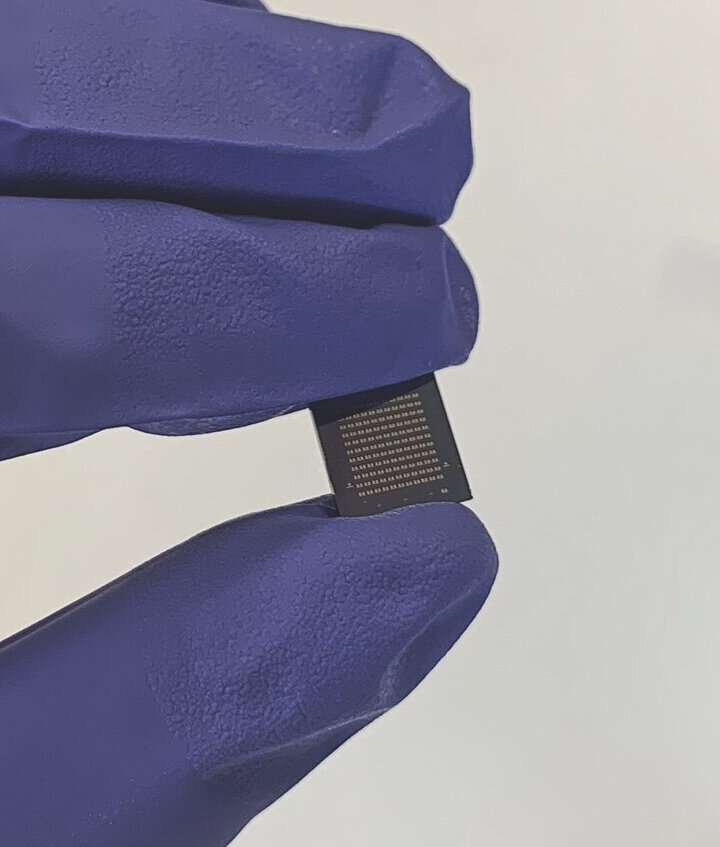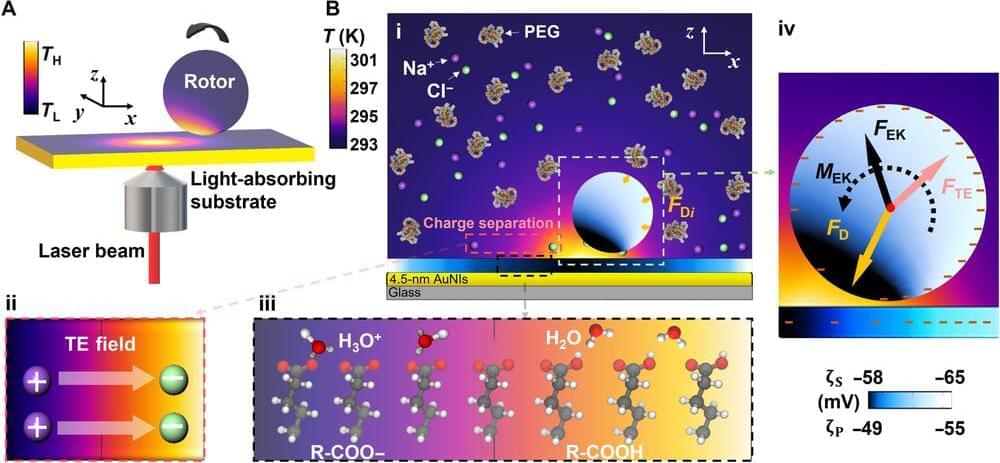View insights.
In a paper published today in Science Advances, researchers at the University of Oxford have developed a method using the polarization of light to maximize information storage density and computing performance using nanowires.

Artificial Intelligence is outgrowing the current pace of Hardware Improvements and requires a new kind of technology to keep up and enable future AI Applications. Scientists seem to have found that creating artificial brains out of nanowire can mimic the human brain and power the biggest and smartest AI models ever made at relatively low energy consumption.
Today’s deep neural networks already mimic one aspect of the brain: its highly interconnected network of neurons. But artificial neurons behave very differently than biological ones, as they only carry out computations. In the brain, neurons are also able to remember their previous activity, which then influences their future behavior. This in-built memory is a crucial aspect of how the brain processes information, and a major strand in neuromorphic engineering focuses on trying to recreate this functionality. This has resulted in a wide range of designs for so-called “memristors”: electrical components whose response depends on the previous signals they have been exposed to.
–
If you enjoyed this video, please consider rating this video and subscribing to our channel for more frequent uploads. Thank you! smile
–
TIMESTAMPS:
00:00 A New Paradigm in AI Computing.
01:36 How this Artificial Brain works.
04:14 What this new Technology will enable.
06:38 Last Words.
–
#brains #ai #nanowire
TWITTER https://twitter.com/Transhumanian.
PATREON https://www.patreon.com/transhumania.
BITCOIN 14ZMLNppEdZCN4bu8FB1BwDaxbWteQKs8i.
ETHEREUM 0x1f89b261562C8D4C14aA01590EB42b2378572164.
LITECOIN LdB94n8sTUXBto5ZKt82YhEsEmxomFGz3j.

Start listening with a 30-day Audible trial and your first audiobook is free. Visit.
http://www.audible.com/isaac or text “isaac” to 500–500.
Future battlefields will employ ever-more technology, whether that battlefield is on earth, in the sea, in space, or in cyberspace. Today we will examine the roles robots, drones, artificial intelligence, armored suits, and nanotech may play in the future of war.
Visit our Website: http://www.isaacarthur.net.
Support us on Patreon: https://www.patreon.com/IsaacArthur.
Facebook Group: https://www.facebook.com/groups/1583992725237264/
Reddit: https://www.reddit.com/r/IsaacArthur/
Twitter: https://twitter.com/Isaac_A_Arthur on Twitter and RT our future content.
SFIA Discord Server: https://discord.gg/53GAShE
Listen or Download the audio of this episode from Soundcloud:
Episode’s Audio-only version: https://soundcloud.com/isaac-arthur-148927746/the-next-century-of-war.
Episode’s Narration-only version: https://soundcloud.com/isaac-arthur-148927746/the-next-centu…ation-only.
Credits:
The Next Century of War.
Science & Futurism with Isaac Arthur.
Episode 280; March 4, 2021
Produced & narrated by isaac arthur.
Written by:

The fundamental rotation of micro and nano-objects is crucial for the functionality of micro and nanorobotics, as well as three-dimensional imaging and lab-on-a-chip systems. These optical rotation methods can function fuel-free and remotely, and are therefore better suited for experiments, while current methods require laser beams with designed intensity profiles or objects with sophisticated shapes. These requirements are challenging for simpler optical setups with light-driven rotation of a variety of objects, including biological cells.
In a new report now published in Science Advances, Hongru Ding and a research team in engineering and materials science at the University of Texas at Austin, U.S., developed a universal approach for the out-of-plane rotation of various objects based on an arbitrary low-power laser beam. The scientists positioned the laser source away from the objects to reduce optical damage from direct illumination and combined the rotation mechanism via optothermal coupling with rigorous experiments, coupled to multiscale simulations. The general applicability and biocompatibility of the universal light-driven rotation platform is instrumental for a range of engineering and scientific applications.
Join Professor Michelle Simmons to find out how scientists are delivering Richard Feynman’s dream of designing materials at the atomic limit for quantum machines. 🔔Subscribe to our channel for exciting science videos and live events, many hosted by Brian Cox, our Professor for Public Engagement: https://bit.ly/3fQIFXB
#Physics #Quantum #RichardFeynman.
Sixty years ago, the great American physicist Richard Feynman delivered a famous lecture in which he urged experimentalists to push for the creation of new materials with features designed at the atomic limit. He called this the “final question”: whether ultimately “we can arrange the atoms the way we want: the very atoms all the way down!”
Professor Simmons will explain how to manufacture materials and devices whose properties are determined by the placement of individual atoms, and will highlight the creative explosion in new devices that has followed and the many new insights into the quantum world that this revolution has made possible.
Watch next:
Putting the sun in a bottle: the path to fusion power ▶ https://youtu.be/eYbNSgUQhdY
What is (qunatum) biology? with Jim Al-Khalili ▶ https://youtu.be/_To6oNh9-ZQ
Nanomaterials: from bench to bedside ▶ https://youtu.be/Z5FG1dSdI7E
The Royal Society is a Fellowship of many of the world’s most eminent scientists and is the oldest scientific academy in continuous existence.
A look at the concept of Self-Replicating Machines, Universal Assemblers, von Neumann Probes, Grey Goo, and Berserkers. While we will discuss the basic concept and some on-Earth applications like Medical Nanotechnology our focus will be on space exploration and colonization aspects.
Join the Facebook Group:
https://www.facebook.com/groups/1583992725237264/
Visit our Website:
www.IsaacArthur.net.
Support the Channel on Patreon:
https://www.patreon.com/IsaacArthur.
Listen or Download the audio of this episode from Soundcloud:
https://soundcloud.com/isaac-arthur-148927746/https://soundc…machines-1
Cover Art by Jakub Grygier:


Extrusion-based 3D printing/bioprinting is a promising approach to generating patient-specific, tissue-engineered grafts. However, a major challenge in extrusion-based 3D printing and bioprinting is that most currently used materials lack the versatility to be used in a wide range of applications.
New nanotechnology has been developed by a team of researchers from Texas A&M University that leverages colloidal interactions of nanoparticles to print complex geometries that can mimic tissue and organ structure. The team, led by Dr. Akhilesh Gaharwar, associate professor and Presidential Impact Fellow in the Department of Biomedical Engineering, has introduced colloidal solutions of 2D nanosilicates as a platform technology to print complex structures.
2D nanosilicates are disc-shaped inorganic nanoparticles 20 to 50 nanometers in diameter and 1 to 2 nanometers in thickness. These nanosilicates form a “house-of-cards” structure above a certain concentration in water, known as a colloidal solution.